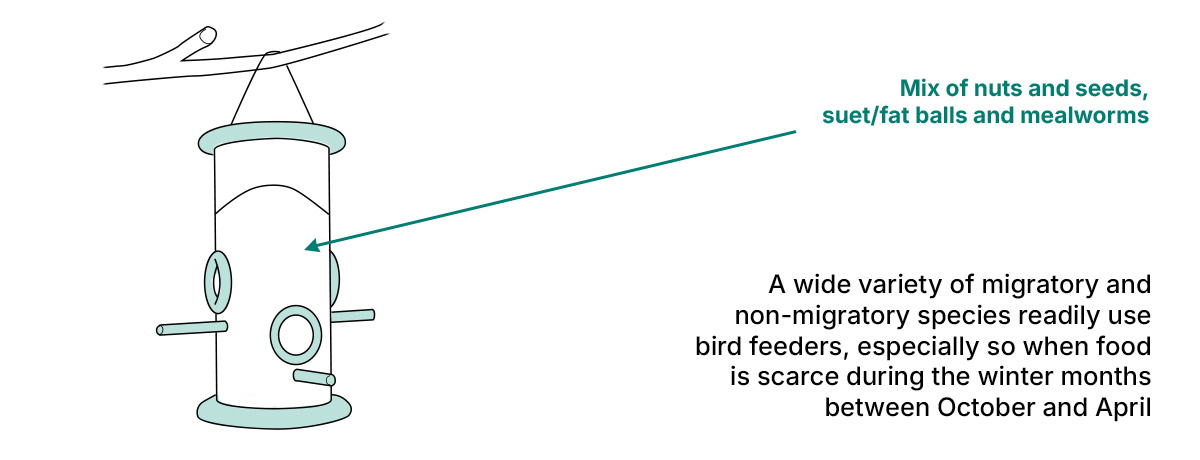What is it?
Bird feeders are many and varied, depending on the species and their specific dietary needs and on what fits best in your outside space. Broadly, they divide into suspended feeders – a cage or holed bottle with seeds in hanging by a string or wire; bird tables – a flat table or tray on top of a stand that nuts, seeds and sometimes fruit and dried insects are left on; and ground feeders – trays at ground level with similar foods to suit ground-feeding birds. Some bird feeders combine two or more of these approaches.
What does it do?
The best food for birds is what they catch or harvest themselves so we should really call these supplementary bird feeders, the point being that we use them to give birds extra food.
Bird feeders replicate what would be found in the wild, compensating for lack of planted and physical habitat that would sustain their food sources in the wild. They also compensate for interruptions to food supply caused by climate change, pollution and pesticides. These pressures make it increasingly important that we provide some nutritional support to our feathered friends.
Bird feeders can also spread disease so important to clean them regularly and remove uneaten food after a week.
Who benefits?
A wide variety of migratory and non-migratory species will readily use bird feeders but different species prefer different food types. And, whilst many prefer eating from a raised table, others prefer to pick their food off the ground. It is always going to be better for birds to be able to find food naturally but providing supplementary food via bird feeders is undeniably helpful too, so long as it is done safely for them. This is especially so when food is scarce during the winter months between October and April. That said, global heating is causing unpredictable changes to the weather with knock-on impacts on the plants and bugs that birds feed on so a well stocked bird feeder may be increasingly valuable all year round.
Find out more
- The Wildlife Gardening Forum guide to feeding birds covers different types of bird feeders, what to feed different species, and how make and maintain them
- Wildlife Watch has a great guide to making your own suspended bird feeder.
- You can build your own wooden bird table too – here’s a clear wikiHow guide – but be warned, this is a considerably more complicated operation and you’ll need a range of tools, skills and materials
- The Natural History Museum website explains how to make fat balls
- The Royal Society for the protection of Birds: https://www.rspb.org.uk/birds-and-wildlife/helping-birds-and-wildlife
- Wildlife and Birdcare, staffed entirely by people with autism and learning disabilities, is a great place to buy bird tables and feeders as well as other


